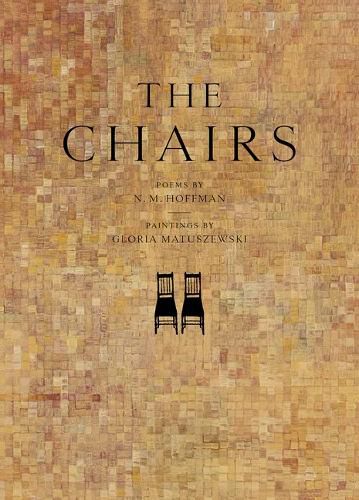Readings Newsletter
Become a Readings Member to make your shopping experience even easier.
Sign in or sign up for free!
You’re not far away from qualifying for FREE standard shipping within Australia
You’ve qualified for FREE standard shipping within Australia
The cart is loading…






THE CHAIR: What the Place is from Where to See
In works of philosophy, the Chair lives large as what is real for purposes of an intellectual investigation of reality. We see this on the stages of philosophical discourse from Plato to Wittgenstein, without putting too fine a point on it. This Chair of philosophy is here wedded to the Chair as a speaking thing, an intimacy generated from a long study of Rilke’s poems, THE ROSES, with their controlled precision of focus. Kearns, Howard & Walker produced the resulting book, THE ROSES, earlier this year, a translation by N. M. Hoffman of Rilke’s Les Roses from the French original into English and elevated by the atmospheric paintings of Gloria Matuszewski. THE CHAIRS may be seen as a follow on to that work.
The poetic enterprise of THE CHAIRS, in this latest work of poetry and paintings from the new press, Kearns Howard & Walker, is comprised of a gesture toward the method observed in translating Rilke’s Les Roses that, for N.M. Hoffman, the poet of this collection, was simultaneously enunciated in Gloria’s commanding visions of the Chair. The paintings here in THE CHAIRS magnify the specificities and felicities of reality that N. M. Hoffman leaned into learning from the master poet, Rilke, to control, perhaps better said to actually see, reality by means of the programmatic method first observed in THE ROSES.
Yet one poet’s method is another poet’s floor. From a focus on the speaking thing, the Chair as arbiter of human reality, it was a natural next step for N.M. Hoffman to move the locus of resonance from the Chair itself and take as the speaking thing, another poem, an event, a loss, a contradiction, or a combination of these, in order to evade Rilke’s strict terrain of the thing itself and move toward territories of the poet’s own.
The paintings of Gloria Matuszewski have provided a stability of momentum for these Chair poems that has answered the call to create out of air, out of will, through a certain purposefulness that attaches to nothing, needs nothing, asks for nothing, is, perhaps, nothing … yet these poems look out over everything with a certainty of what the place is from where to see (XVIII, November Chair, from THE CHAIRS).
Poetry. Art.
$9.00 standard shipping within Australia
FREE standard shipping within Australia for orders over $100.00
Express & International shipping calculated at checkout
THE CHAIR: What the Place is from Where to See
In works of philosophy, the Chair lives large as what is real for purposes of an intellectual investigation of reality. We see this on the stages of philosophical discourse from Plato to Wittgenstein, without putting too fine a point on it. This Chair of philosophy is here wedded to the Chair as a speaking thing, an intimacy generated from a long study of Rilke’s poems, THE ROSES, with their controlled precision of focus. Kearns, Howard & Walker produced the resulting book, THE ROSES, earlier this year, a translation by N. M. Hoffman of Rilke’s Les Roses from the French original into English and elevated by the atmospheric paintings of Gloria Matuszewski. THE CHAIRS may be seen as a follow on to that work.
The poetic enterprise of THE CHAIRS, in this latest work of poetry and paintings from the new press, Kearns Howard & Walker, is comprised of a gesture toward the method observed in translating Rilke’s Les Roses that, for N.M. Hoffman, the poet of this collection, was simultaneously enunciated in Gloria’s commanding visions of the Chair. The paintings here in THE CHAIRS magnify the specificities and felicities of reality that N. M. Hoffman leaned into learning from the master poet, Rilke, to control, perhaps better said to actually see, reality by means of the programmatic method first observed in THE ROSES.
Yet one poet’s method is another poet’s floor. From a focus on the speaking thing, the Chair as arbiter of human reality, it was a natural next step for N.M. Hoffman to move the locus of resonance from the Chair itself and take as the speaking thing, another poem, an event, a loss, a contradiction, or a combination of these, in order to evade Rilke’s strict terrain of the thing itself and move toward territories of the poet’s own.
The paintings of Gloria Matuszewski have provided a stability of momentum for these Chair poems that has answered the call to create out of air, out of will, through a certain purposefulness that attaches to nothing, needs nothing, asks for nothing, is, perhaps, nothing … yet these poems look out over everything with a certainty of what the place is from where to see (XVIII, November Chair, from THE CHAIRS).
Poetry. Art.